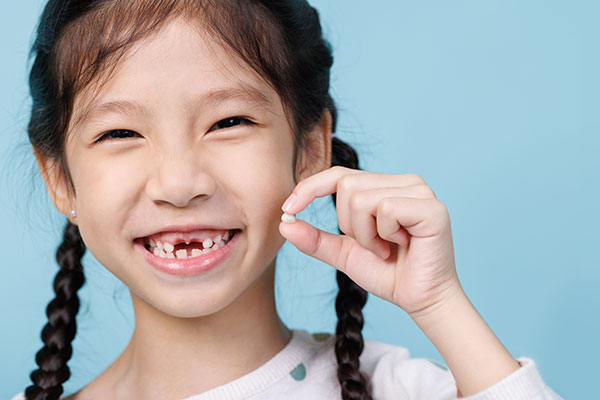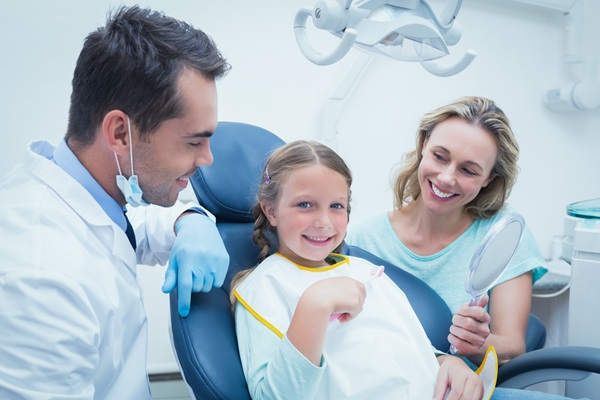Restorative Options from a Children’s Dentist for an Injured Tooth

Our children's dentist provides therapeutic treatments to restore damaged primary and permanent teeth. Baby teeth are just as vital as permanent teeth since they play many critical roles, like holding space for permanent teeth and helping with speech development.
Restorative treatments provided by our children's dentist
Some of the therapeutic treatments a children’s dentist might recommend for your child's damaged tooth include:
1. Composite bonding
This involves using composite resin made from mixtures of plastic and glass to rebuild damaged teeth. The composite can be matched with the color of the patient's teeth, so repairs look natural.
Restoring a tooth with composite bonding is a non-invasive procedure that does not involve making permanent alterations to the tooth's structure. Composite bonding is a straightforward procedure that involves roughening a tooth's exterior with an etching solution and applying the composite directly to the tooth. The resin is molded as desired before being hardened with ultraviolet.
2. Dental veneers
Dental veneers are wafer-thin shells that are custom-made to fit over the front of a patient's teeth. They can be used to change the appearance of teeth that are chipped, cracked, stained, or discolored. Veneers are also an option for patients who have gaps between their teeth.
Placing veneers on teeth usually involves removing enamel from the front of the tooth. This prevents the veneer from making the tooth appear abnormally bulky.
3. Dental crowns
Crowns are another way to restore damaged teeth. A crown is a "cap" that is placed over a tooth to cover it and protect it from further damage. Crowns can be made from various items like porcelain, metal, or ceramic. The type of crown recommended by our children's dentist will depend on the location of the tooth being treated and the patient's bite. Stainless steel crowns are often suggested for children since they are the most affordable and one of the most durable types of crowns.
4. Root canal therapy
Root canal therapy is a treatment that is used to save a tooth that has been damaged by infection or decay. The procedure involves getting rid of the infected or damaged tissue inside the tooth before sealing it up with gutta-percha. A root canal is an efficient way to treat infection, and teeth treated with the procedure are typically covered with a crown to protect them from further damage.
5. Tooth extractions
In some cases, our children's dentist may recommend a tooth extraction. This is usually only done when a tooth cannot be saved with other therapeutic treatments. A space maintainer is typically placed where the extracted tooth was if it is a baby tooth to keep space for the permanent tooth that will eventually erupt there.
We can restore your child's damaged tooth
Contact our office to arrange an appointment with our pediatric dentist if your child has suffered an injury to their teeth. We will work with you to create a treatment plan that is best for your child's individual needs.
Request an appointment here: https://www.grandparkwaypediatricdental.com or call Grand Parkway Pediatric Dental at (832) 579-0960 for an appointment in our Richmond office.
Check out what others are saying about our services on Yelp: Children's Dentist in Richmond, TX.
Recent Posts
Each year, increasing numbers of pediatric dentists offer advanced tooth-colored fillings instead of older metallic options. Still, many wonder whether these matching fillings look more natural than other filling types. The answer is yes, provided they are initially done correctly and properly taken care of afterward.Comparing enamel-colored fillings to other fillings and the original teeth…
A healthy smile is important at any age, but when dental issues arise, knowing when to seek professional care is important. A family dentist can address many dental concerns, including tooth damage that requires repair. Whether a child chips a tooth while playing or develops a cavity, a timely visit to the dentist can prevent…
If you experienced a cavity as a child, you almost certainly had it repaired with a dental filling. One type of dental filling is composite fillings. These fillings contain resin and glass instead of metal. Pediatric dentists often use these fillings to treat children who have cavities. Before treatment, it is important to understand how…
Does your child have a cavity that needs to be filled? A pediatric dentist can repair decayed teeth with composite fillings. These tooth-colored fillings can restore your child’s smile while offering the cosmetic benefits of uniform color. This article discusses the various types and colors of dental fillings, when a pediatric dentist may choose one…


